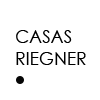Textile Abstraction
Olga de Amaral · Tonico Lemos Auad · Brígida Baltar · Josh Blackwell · Paloma Bosquê · Simon Callery · María Fernanda Cardoso · Michele Ciacciofera · Alexandre da Cunha · Ayan Farah · Josh Faught · Cynthia Gutiérrez · Channing Hansen · Tamara Henderson · Teresa Lanceta · Eric N. Mack · Rita McBride · María Angélica Medina · Bernardo Ortiz · Zoë Paul ·María Fernanda Plata · Luis Roldán · Indrė Šerpytytė · Sara Sizer · Eduardo Terrazas · Summer Wheat · Margo Wolowiec
Textiles have played a major role in art for thousands of years, from the decorated cottons of ancient Egypt to the silks of ancient China. And they continue to fascinate contemporary artists: sewing, knitting, crocheting, knotting, quilting, and many more techniques involving plant, animal, and synthetic fibers can all be found in art galleries and museums.
While the popularity of fabric as a contemporary art medium is perhaps an understandable reaction to the mainstream contemporary art world, with its overly conceptual gestures, excessive and high-end productions, and market focus on traditional media such as painting, it is also textile’s material quality, its delicate, haptic, and flowing characteristics, and its history as an avant-garde medium of the early twentieth century that have made it for so many contemporary artists a material of choice.
Textile Abstraction puts special emphasis on the work of artists from Latin America, in part because of the location of the exhibition in Colombia, but more broadly due to the high concentration of artists working with textiles in this part of the world. The featured work ranges from contemporary quilts to innovative combinations of fiber to metal tapestries that are both two-dimensional textiles and three-dimensional sculptures. Many bring together various hybrid forms and shapes; repurposed or deconstructed fabrics; or cloth that has been painted, dyed, or printed. They vividly reveal how textiles today, despite their great diversity, articulate a common syntax that constantly navigates between the natural and the artificial.
Jens Hoffmann










